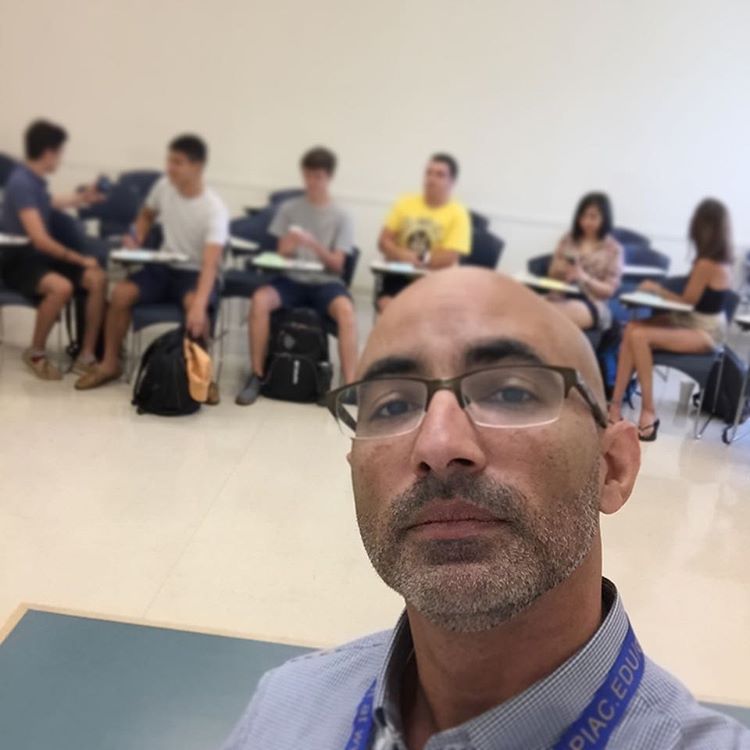You Will Get Offended
 During the first day of class for our Inquiry course I asked the students to get their cellphones out, turn around, and take a selfie. Since we were sitting in a circle, by turning around we could see other people taking a selfie behind us as we were taking our selfie. Then I told them,
During the first day of class for our Inquiry course I asked the students to get their cellphones out, turn around, and take a selfie. Since we were sitting in a circle, by turning around we could see other people taking a selfie behind us as we were taking our selfie. Then I told them,
“You will get offended at some point. Someone is going to say something that will go against what you think or believe, and you will get offended. However, getting offended is a choice. There is another choice. You can look back at this selfie and understand that you only have one view and a very small part of the complete story.”
Inquiry is a fancy label to seek understanding of multiple points of view. In the process, we discover that we don’t know everything, or have all the answers. Interestingly, with all the advances in technology, specially in astronomy, some people still believe that the universe revolves around them. Some people assume that their current knowledge and understanding, and self-gained experience is the one and only irrevocable truth. As I often tell my students, and share with other people in conversations, the earth was flat. Through a process of investigation we realize that it is not.
In life, what we think we know today can be challenged, and it can change for our own benefit. We increase knowledge when we allow ourselves to understand different positions and points of view. Our world expands when we can see it from multiple perspectives, but not so much when we only look through the scope of our self-righteous, self-absorbed understanding of the world around us like there is nothing else. It is very easy to talk about tolerance and acceptance, when the only thing we tolerate and accept is what we believe. Then we get offended by opposition. Nevertheless, there is a big difference between tolerance and acceptance, and to surrender your believes and principles for what someone else understands is the truth. Understanding you is not going to change what I believe, but I get to see your point. That is a subject for another conversation.
We all have a selfie, a small view of the world around us. You choose to be offended or to allow yourself to understand other points of view. Some people will choose to hold on to their wisdom and allow their world to shrink with their self-righteousness. Others will grow their wisdom and understanding by investigating and learning about different perspectives on the subject matter.


The Science in the Art
It has been a while since last time I wrote in my blog. It has been a great journey so far this semester teaching Inquiry at Quinnipiac University, the academic advising experiment, the sculpting and painting parties, the workshops and talks on Business Needs Assessment with an Inquiry Approach, the show that just ended at Spectrum Gallery, the sculpting demo I had there back in March, the sculpting workshop at Columbus School through ARTE Inc., the computer classes at the now Literacy Volunteers of Southern Connecticut, and a new partnership unfolding that gets me closer to understand my mission and the reason I do what I do… Well, that was a long sentence… Things are wrapping up as we are about a month away to finish the semester. The summer (if we get one this year in New England) is already promising good things. I think that brings us up-to-date in everything that is happening.
The Science in the Art
My students were working in groups to get feedback from each other as they prepared for their oral presentations. This is one way research in peer tutoring learning environments supports practice and practice supports research. In the process, one student was trying to find a connection between health sciences, specifically medicine, and art. To serve as an example that helped make the connection clear and concrete we have the Frank H. Netter M.D. School of Medicine at Quinnipiac University. Frank H. Netter M.D. was a surgeon and world’s most prolific medical illustrator. He helped medicine understand the human body with his illustrations. Interestingly, when people study medicine they call it medical arts. Not finding the connection yet? Let me help you understand. All the knowledge in science, or in any field, is incomplete without the capacity to think creatively to solve specific issues or to accurately come up with a diagnosis.